From volume to value:
Accelerating the digital transformation of agriculture
Q&A with Feroz Sheikh, Syngenta Group’s Chief Information and Digital Officer
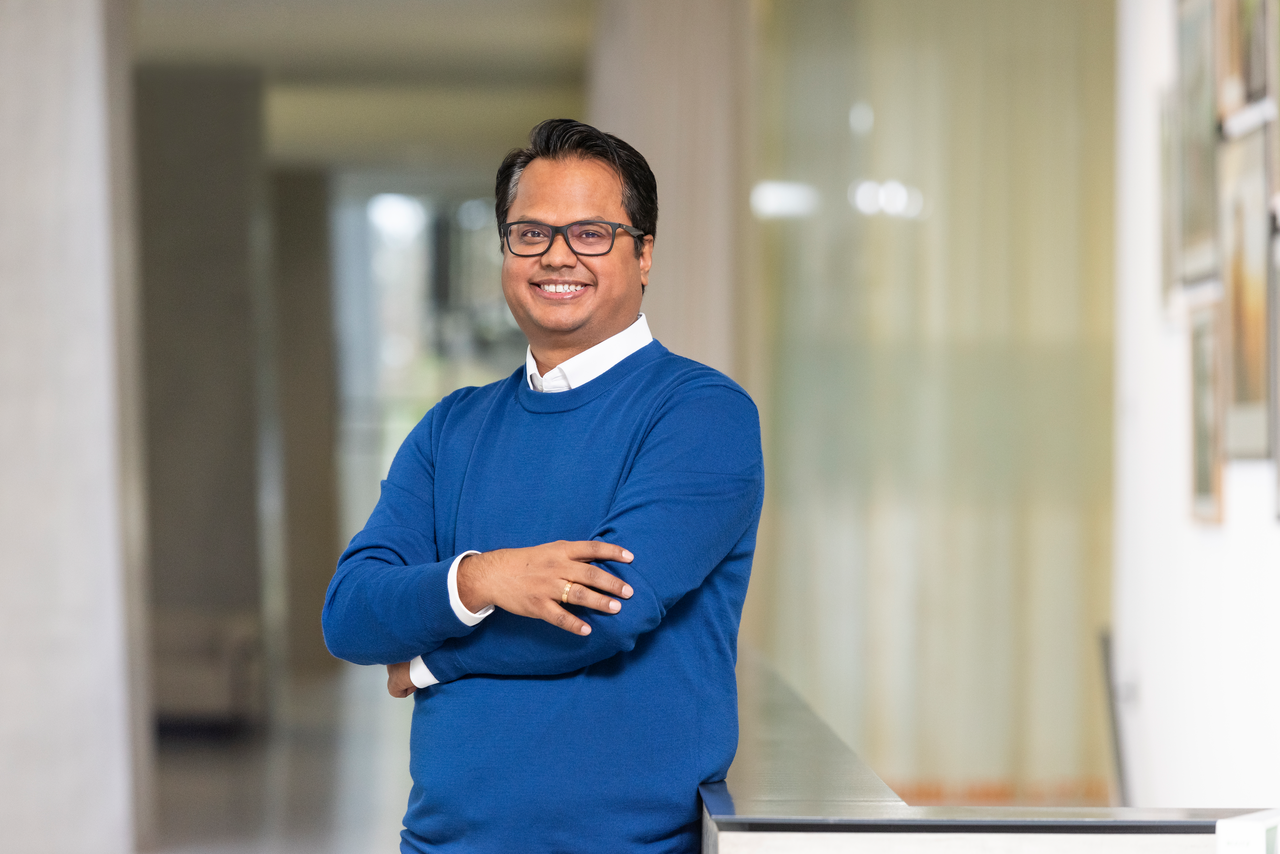
As Chief Information and Digital Officer of Syngenta Group, Feroz Sheikh spearheads the company’s efforts to accelerate the digital transformation of agriculture. It’s no small task. In this Q&A, Sheikh describes how his previous ventures as a technology startup founder and working in philanthropy led him to tackle the twin challenges of feeding the world while preserving the earth. He also discusses Syngenta Group’s key contributions to modern farming and his vision for the future of agriculture.
Before you joined Syngenta Group, you were an entrepreneur. Tell us a bit about your previous business and philanthropic ventures.
My first startup developed real-time performance management solutions for hospitals, healthcare providers and insurance companies. After that company was acquired, I co-founded a consulting firm focused on solving interesting technology problems. One of our most exciting innovations was in education. We developed technology to support “anytime, anywhere learning,” in which teachers would record lectures that students could consume wherever they were. That led to my third startup, which focused on continuing education for college graduates and early-career professionals.
After that business was acquired I turned to a societal cause, joining with leading philanthropists in India to transform learning for children. Our goal was to make this available to every single child in India, which is basically 200 million children. The government of India adopted the technology as the national platform for teachers, reprinting half a billion textbooks with QR codes that linked to our digital platform—a free resource where students could access interactive content and assessments.
This is when I saw first-hand what large-scale transformation driven by technology could look like.
What sparked your interest in the agriculture space?
During my consulting days, we worked with some of India’s leading academic and research institutions to organize knowledge around agriculture and publish it as an open-source platform. We called it “Agropedia.” And when we open-sourced the learning technology we created for children, other philanthropies such as the Gates Foundation used it to help farmers in the southern state of Andhra Pradesh improve soil health. The World Bank used it to help farmers in the state of Maharashtra to understand the dynamics of demand and supply for different commodities. This work got me interested in the potential for technology to drive change in agriculture.
What inspired you to join Syngenta Group after nearly five years working on societal problems?
My work in education showed me that we can solve societal problems through the use of technology. The idea that we can use technology to take care of the planet, while feeding a world population that continues to grow, was very inspiring to me. What really attracted me to Syngenta Group was the magnitude of the transformation required in agriculture—and Syngenta Group’s commitment to leading it. We’re talking about global scale, and we’re talking about something that affects all of us.
What were your priorities after joining Syngenta Group in 2018, in your initial role as Global Head of Engineering and Data Science, and what surprised you the most?
In my first role at Syngenta Group, I was responsible for bringing together all of our digital technologies, digital architectures and product portfolios, including our ag tech acquisitions. I was very pleasantly surprised by our wealth of information, intellectual property and assets. A lot of exciting work was already going on in different parts of the company, and by bringing it together we were suddenly creating something much bigger.
Another aspect of that work was bringing together all of the different technology components—those we created and those that came with our ag tech acquisitions—to create our Cropwise platform, our flagship digital solution. By the end of last year, we had 230 million acres [93 million hectares] around the world connected to our digital tools.
What does Cropwise entail?
Cropwise is a set of tools that help farmers make better data-driven decisions to maximize their yields while taking care of the planet. Think of a farmer with hundreds of thousands of hectares of farmland. It's nearly impossible for that farmer to visit all corners of their field before making every one of the nearly 150 decisions that farmers need to make each growing season. Cropwise uses remote sensing, satellite imagery, soil composition data and weather pattern monitoring to give farmers a detailed picture of their entire fields. On the other end of the spectrum are smallholder farmers in Asia, for whom access to agronomic advice, credit and the marketplace are some of the important problems that we’re addressing through Cropwise.
The real differentiator is the power of Syngenta Group’s wealth of agronomy expertise and our decades of research and development data. We’ve used this to develop artificial intelligence (AI) and machine learning algorithms that help farmers determine everything from what crops to plant, to what variety of seeds to buy, to what products to spray and when to spray them. Through Cropwise we can help farmers not only make better decisions, but also execute on these decisions—by generating prescriptions that are sent directly to tractors that can carry the prescriptions out.
One of our key goals is to reach more growers with Cropwise, to help them make data-driven decisions and maximize yields. Our target is to expand to at least 250 million acres by the end of the year. We’re also helping Syngenta Group’s own advisors, channel partners and sales reps use Cropwise so they can have more meaningful conversations with farmers. By making more precise recommendations for what products to use, and how and when they should be applied and when, we can help farmers make better decisions.
How does Syngenta Group’s emphasis on regenerative agriculture—and, more broadly, the idea that agriculture should be part of the climate solution—fit into your work as Chief Information and Digital Officer?
For us to limit climate change and resulting global warming to 1.5℃, we need to reduce 22 gigatons of CO2 emissions by 2030. Because 22% of those emissions come from agriculture, the impact we can make by focusing on that is enormous. The world has already maximized the available cropland. Studies show that by 2050 we would need nearly 600 million hectares [nearly 1.5 billion acres] of additional land to feed everyone. The only way we’ll be able to feed the growing population is by maximizing productivity and increasing yield. This has to be coupled with agronomic practices that reduce emissions and sequester more carbon in the soil.
I see this challenge as a jigsaw puzzle. Technology has a huge role to play, and regenerative agriculture practices like crop rotation are also important pieces of the puzzle. Precision agriculture is another important piece.
How would you describe precision agriculture, and why is it so important?
Traditional practices in agriculture deal in averages. You broadcast a product on the entire field, or if you’re planting seeds you take the average seed rate and plant the entire field at the same rate. But when you deal with averages, you’re not accounting for the variability that exists in the real world. The soil on a field is not the same everywhere. Weeds and insects don’t affect the entire field at the same time.
Precision agriculture is all about moving away from these averages and toward what we might call “caring for every plant individually.” There are two aspects to it: spatial precision, in which we treat every square inch or meter of the field uniquely; and temporal precision, in which we determine the optimal timing for every action we take (we don’t just spray herbicide seven days after planting because that’s what our grandfather did or that’s what everybody else does). The benefits of both aspects of precision agriculture are enormous.
How do you envision the future of agriculture?
I want to see a future where every single seed, and every single drop of chemical or biological products that we sell, is accompanied with a precision recommendation. When we’re sick and we need more than over-the-counter medication to get better, we get a prescription from the doctor. Imagine a future where agricultural products are sold with recommendations and applied with precision by autonomous machines. Imagine a field where it’s not one big tractor, but many small tractors that are operating autonomously and talking to each other in a swarm.
Already, there are two significant shifts underway. The first one is from volume to value, where instead of talking about how much was sprayed we’re talking about how to get a weed-free field and achieve the other outcomes a grower has. The second shift is the use of digital technologies, including computer models and algorithms—both in the field to help farmers make better data-driven decisions, and in the lab to discover new molecules and new solutions faster.
Again, it’s a jigsaw puzzle. There have been significant advances in chemistry, in genetics, in hardware, in machinery. And the last few pieces to fall into place are biologicals and digital technologies like AI and machine learning. It really is all about helping farmers maximize yields while reducing the impact on the climate. And technology has a huge role to play.

Cropwise platform: a set of tools that help farmers make better data-driven decisions to maximize their yields while taking care of the planet.
Cropwise platform: a set of tools that help farmers make better data-driven decisions to maximize their yields while taking care of the planet.
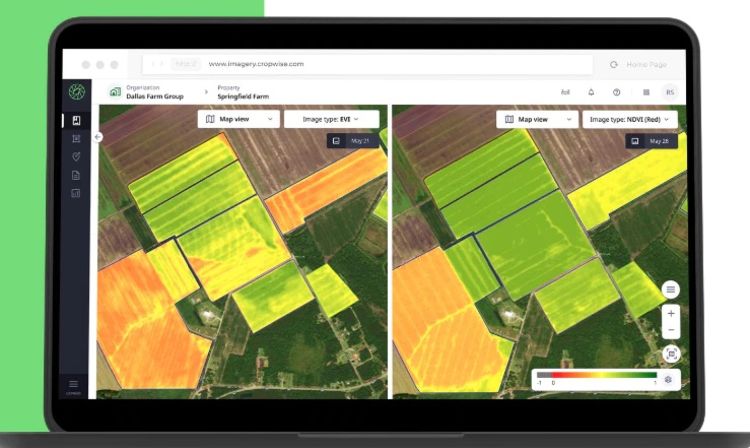
Cropwise in action: The digital service produces key insights for farmers. The color coding indicates which parts of a field are thriving and where pests or disease might be posing problems.
Cropwise in action: The digital service produces key insights for farmers. The color coding indicates which parts of a field are thriving and where pests or disease might be posing problems.
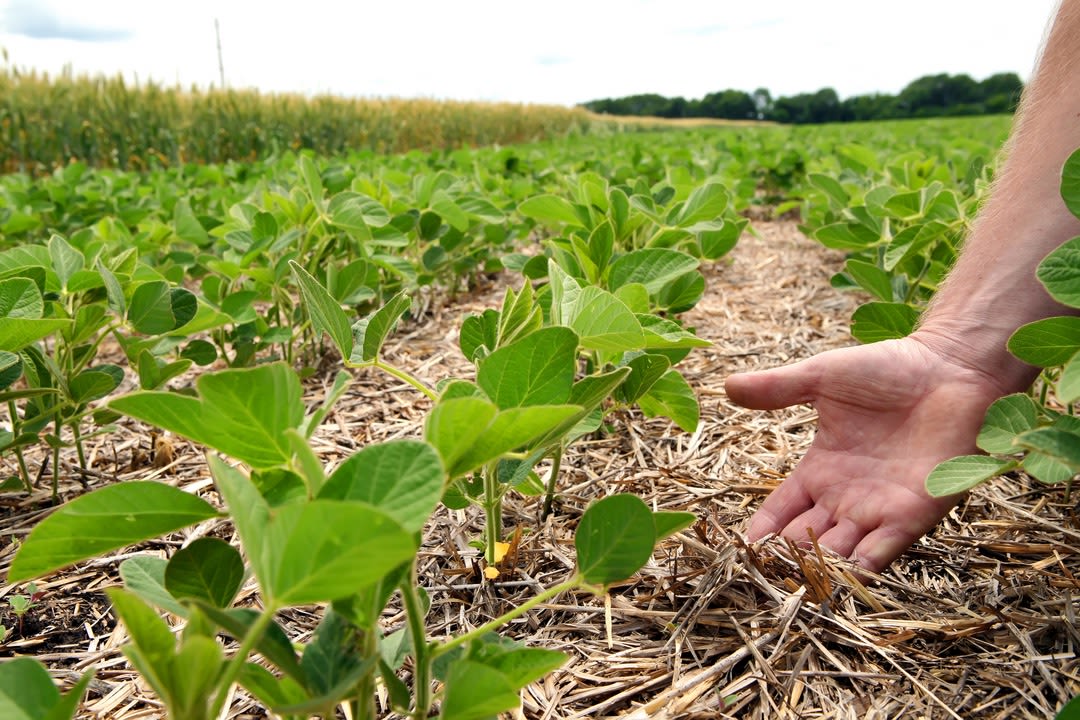
Regenerative agriculture is an outcome-based food production system that nurtures and restores soil health, protects the climate and water resources and biodiversity, and enhances farms' productivity and profitability.
Regenerative agriculture is an outcome-based food production system that nurtures and restores soil health, protects the climate and water resources and biodiversity, and enhances farms' productivity and profitability.
Find out more about regenerative agriculture
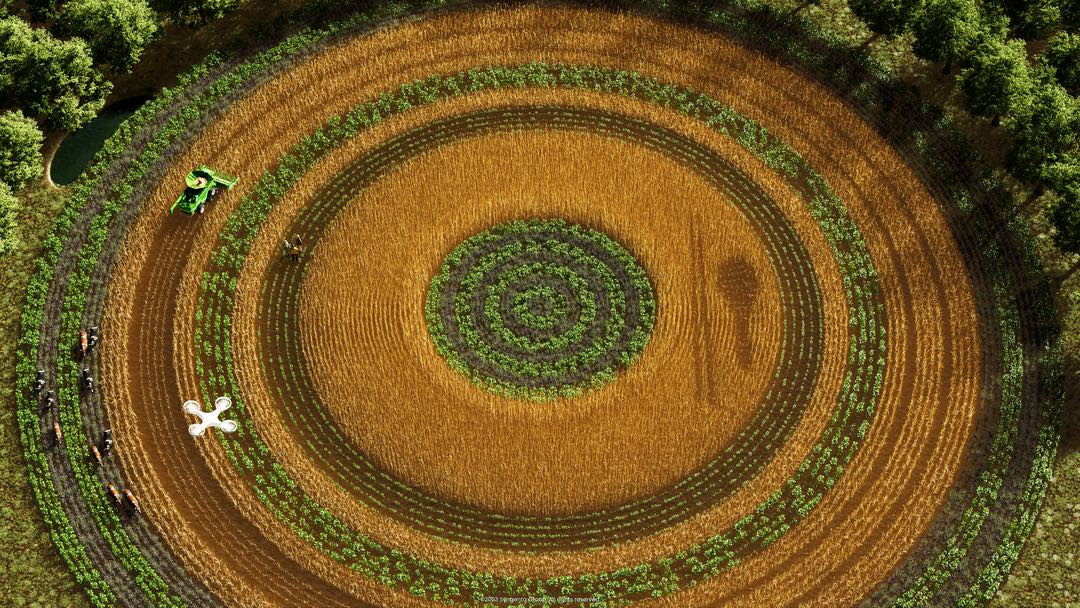
Regenerative agriculture at a glance
Explore our infographic to find out more about regenerative agriculture practices.
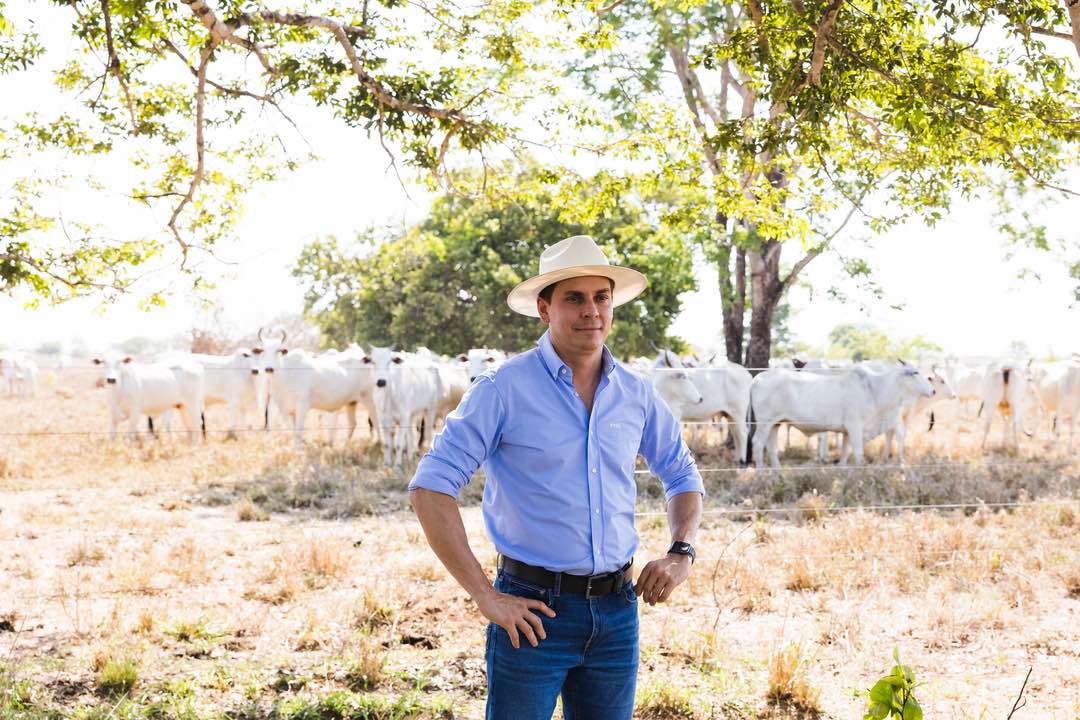
Keeping the soil cool in a hot, tropical climate
How Regenerative Agriculture improves cultivation at Grupo Portilho´ farm in Brazil.
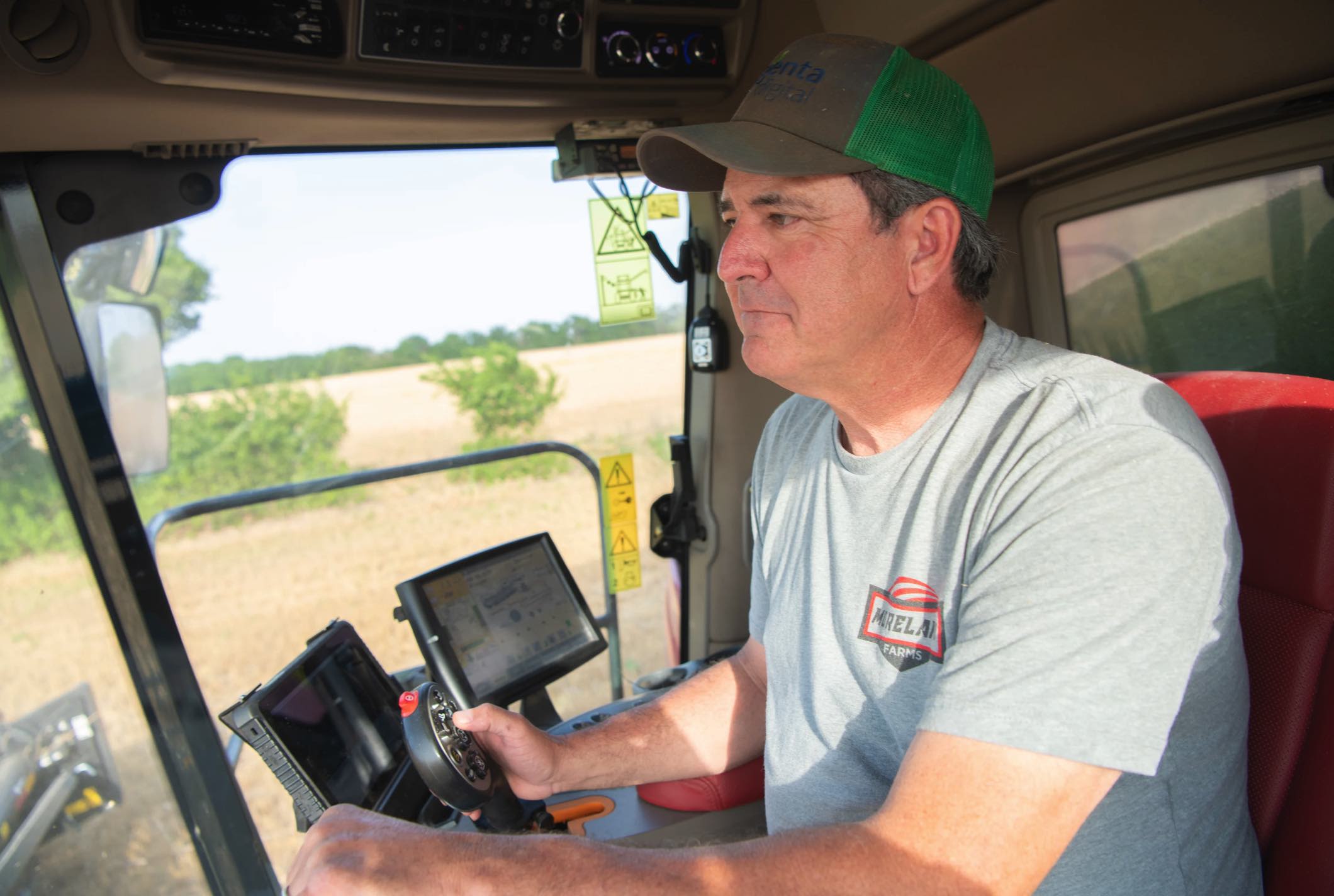
Innovation meets tradition
Since Moreland Farms began transitioning to no-till farming and constant crop rotation in 1996, there have been consistent yield increases and other environmental and economic benefits.

